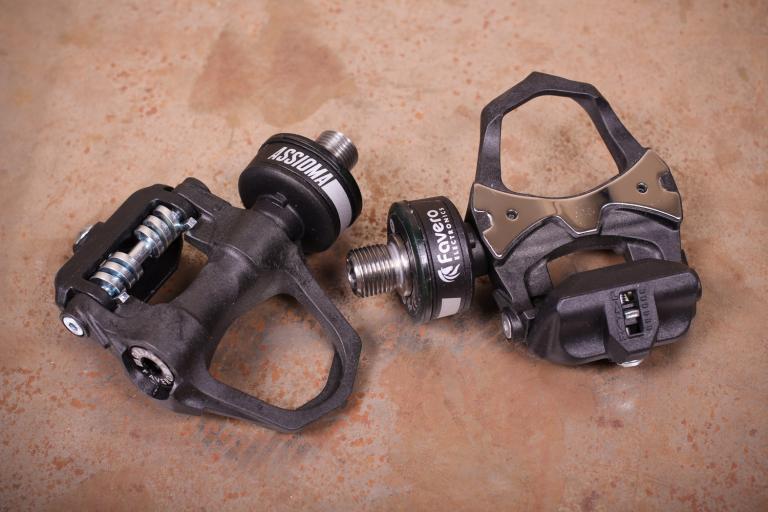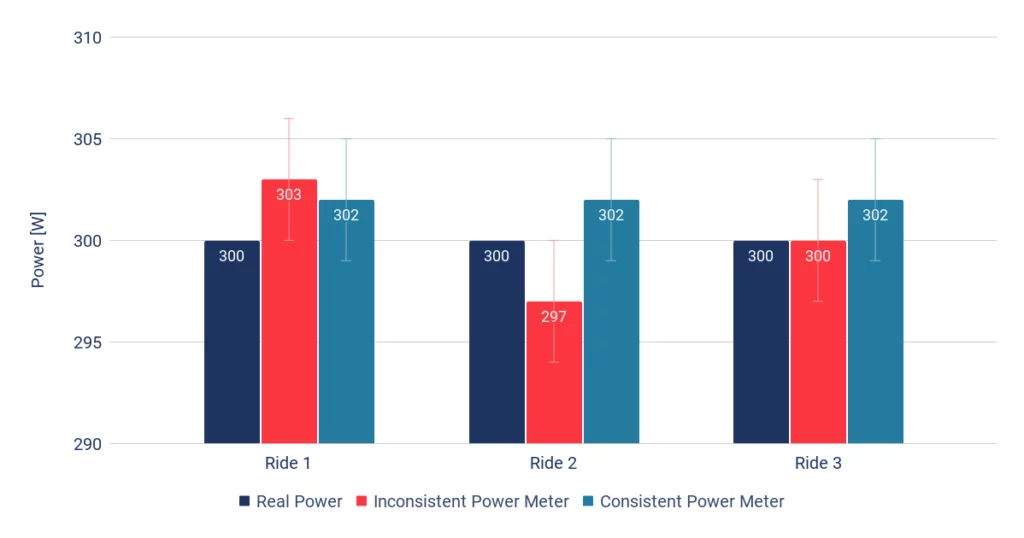Accuracy and precision
When choosing a cycling power meter, you should focus on the device’s two most important characteristics: accuracy and precision. First of all, a high power meter’s quality should be associated with high accuracy. It is generally recommended that your meter’s precision be in the range of ±1% to ±2% . Such a high level of precision is necessary because the power you measure should closely reflect the real power you exert, making your training more calculated and efficient.
Making an emphasis an Accuracy
Accuracy is a key factor when investing in a power meter because it refers to how closely the data reported by this device is to the real state of things. For instance, this power meter’s quality is especially critical for competitive cyclists because their training and race strategies depend highly on the bicycle’s training results. Stages Cycling power meters are known for their great accuracy, which is ±1.5% or less deviation. Many professionals prefer this brand since their results are always validated.
Evaluating Precision Measure
Precision in a power meter refers to how consistent the readings provided by the device are. The meter is considered precise if the same performance conditions provide similar results. Repeated tests are important when variations in performance should be exposed or when comparing performance overtime. Quarq power meters are detected precision and can be used to measure performance. Precision in measurement
An additional criterion is the bicycle power meter’s water and impact resistance because you should focus on such solid instruments when cycling in rough rainy unpredictable weather. Finally, consider how to get the device installed and choose crank-based, pedal-based, or hub-based meters, depending on how you prefer to do it and how often you switch bikes. A recommendation for you is Garmin Vector 3 pedal-based power meter because, besides high measuring accuracy, it includes dual-sensing. This addition enables each leg’s power to be analyzed far more efficiently for mistakes in pedaling techniques and to monitor recovery performance.

Compatibility
When choosing a power meter, one of the most important factors is to consider the meter’s compatibility with your cycling set-up. Compatibility is crucial not only in terms of installation but also with regard to how well the meter can be integrated with other systems, such as bike frames, cranksets, and cycling computers.
Bike Frames and Cranksets.
Before purchasing a power meter, you need to check if it is compatible with your bike’s frame and crankset . Versatile power meters, such as SRM Origin, were designed to be adaptive and are compatible with a wide range of crankset configurations . As power meters do not require any additional adapters, they can be conveniently installed on many modern bikes.
Electronic Groupset Integration.
The power meter also needs to be compatible with electronic groupset devices as modern meters should utilize electronic sensors for transmitting data . Bluetooth- and ANT-compatibility are important for data tracking, and an example of such a power meter is the Favero Assioma Duo pedal. This meter can be recommended to cyclists who use state-of-the-art digital systems to track their performance.
Software for Data Analysis
Make sure that the power meter is compatible with your training software as power meters or other devices are frequently used in conjunction with software apps. Comprehensive app suites often include solutions for all occasions, and Zwift or TrainerRoad might be used for stationary training. You can use the Wahoo KICKR Power which communicates with the software suite and can measure power output.
Multi-Bike Use
If you have several bikes, you need to consider how easy it would be to remove and install your power meter. You can choose pedal-based systems, such as Garvin Vector 3, as they are the easiest to install and can be easily transferred from one bike to another without re-calibrating within minutes.
Connection and Data Transfer
The capability of a cycling power meter to connect seamlessly and transfer data efficiently is crucial to an effective training routine. A power meter should feature dual connectivity to both the ANT+ and Bluetooth Smart . This would ensure that the product can be easily connected to the widest array of both devices and applications. The data stream provided by such connectivity would also be reliable to both cycling computers and smart devices. The blend of such connectivity would ensure an efficient input of real-time data.
Significance of Connectivity
For one, a decent power meter with strong connectivity would not lose data or connection throughout a ride or a training session. For instance, even in the most electronic-device polluted areas, the connection of the PowerTap P2 pedals is noted for being consistent . As their performance president releases to connection, the AVG Cycling , noting that such consistency is particularly important on race day.
Speed and Quality of Data Transfer
Secondly, such connection is stable because the data transfer is sufficiently efficient at transferring the power output of a cyclist in a near-real-time manner. For example, real-time data of the Quarq DZero power meter is put into cycling in a near-instant manner. Such precise feedback would be crucial to a cyclist’s ability to adjust their effort on shorter timeframes. This would be useful in race circumstances or under conditions of intervals.
Additional Features
Another condition of selecting a quality power meter would be connectivity and efficient uploading to training applications. For instance, the Garmin Vector 3 not only connects through ANT+ but also easily uploads into Garmin Connect™ application . This would ensure that cyclists can also review their power output, cadence, and cycling dynamics after the ride.
Future-Proofing
Finally, decent power meters should feature an option of updating firmware through their connection. For instance, even the low-end power meter from the list, the Favero Assioma, use their application for such updates and calibration . The updates may ensure that the power meter features are enriched, it becomes more accurate, and it lasts longer than would be otherwise.

Battery Life and Power
One of the most essential steps to making your training session successful is to choose a cycling power meter that has outstanding battery life and appropriate power management. This decision will enable you to collect the most reliable and relevant data on your performance and avoid frequent interruptions for the device’s recharging.
The Importance of Long Battery Life
Long battery life is extremely important for endurance athletes and those who prefer or need to have long training sessions or even those who take part in multi-day events. The Assioma Favero Uno can be considered the best option. It provides its user with 50 hours of work on one charge that means you can ride more and charge less. This device is particularly significant for such users as cyclists who take part in multi-day stage races or long-distance tours.
Power Management Features
Power management systems ensure that your device consumes minimal amounts of energy when you are not using it. When you need to start your session or track data on your performance, it will turn on very quickly. The Garmin Vector 3, for example, features intelligent sleep mode that turns off the device for you, but it wakes up at once when you start training .
Recharging Options
Your power meter should also have an option for charging. The SRM PowerMeter Origin , for instance, is developed with USB-charging that can be found in all contemporary devices and can be charged with users’ common recharging equipment. This feature can be especially useful if you have frequent cycling tours with overnight stays in different places as you will not need a new charger, and you can use the charger you need for your smartphone or other devices instead. It is also a common and usual method that most users are accustomed to. Also, I consider that the device should have indicators of its battery status to avoid being surprised by battery shortages if your charge runs out in the middle of a critical race or training and plan it in advance. The Stages Power L, for instance, is perfect as it has LED indicators.




